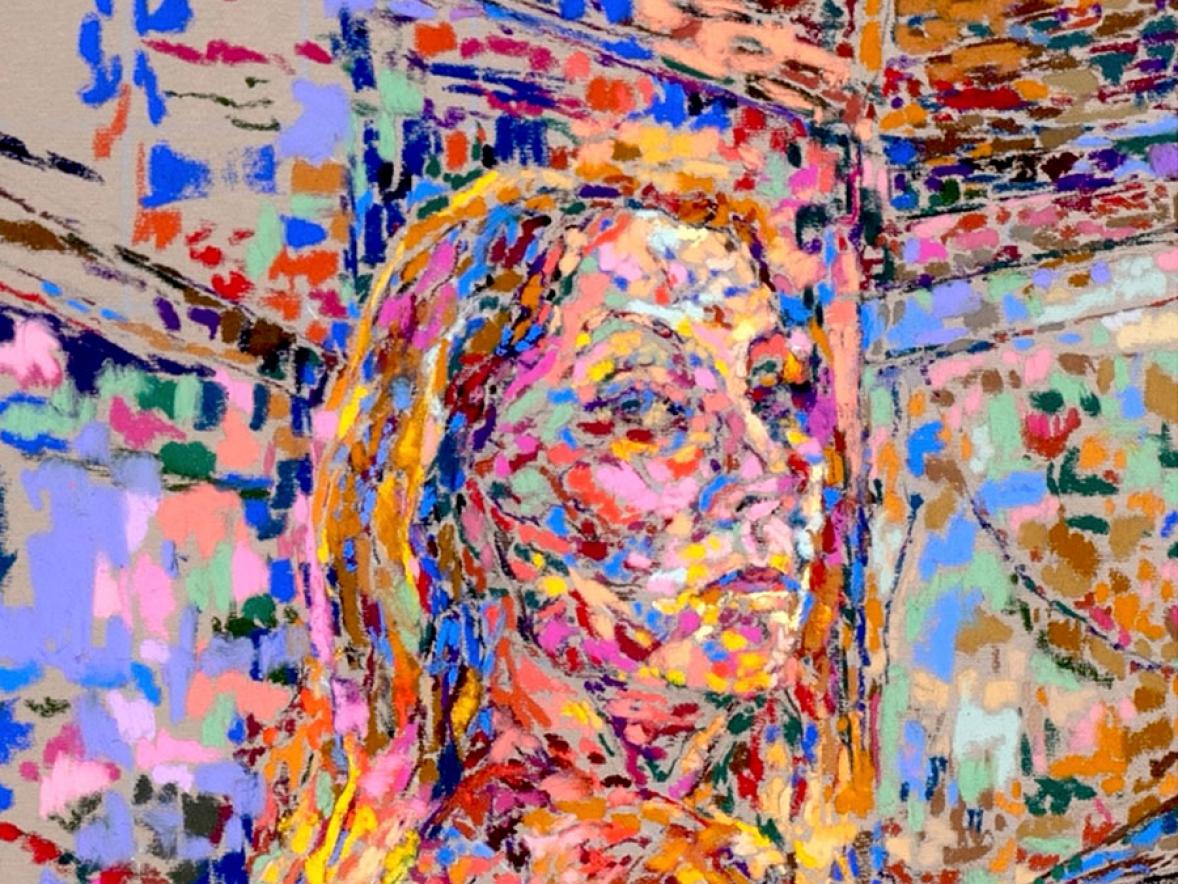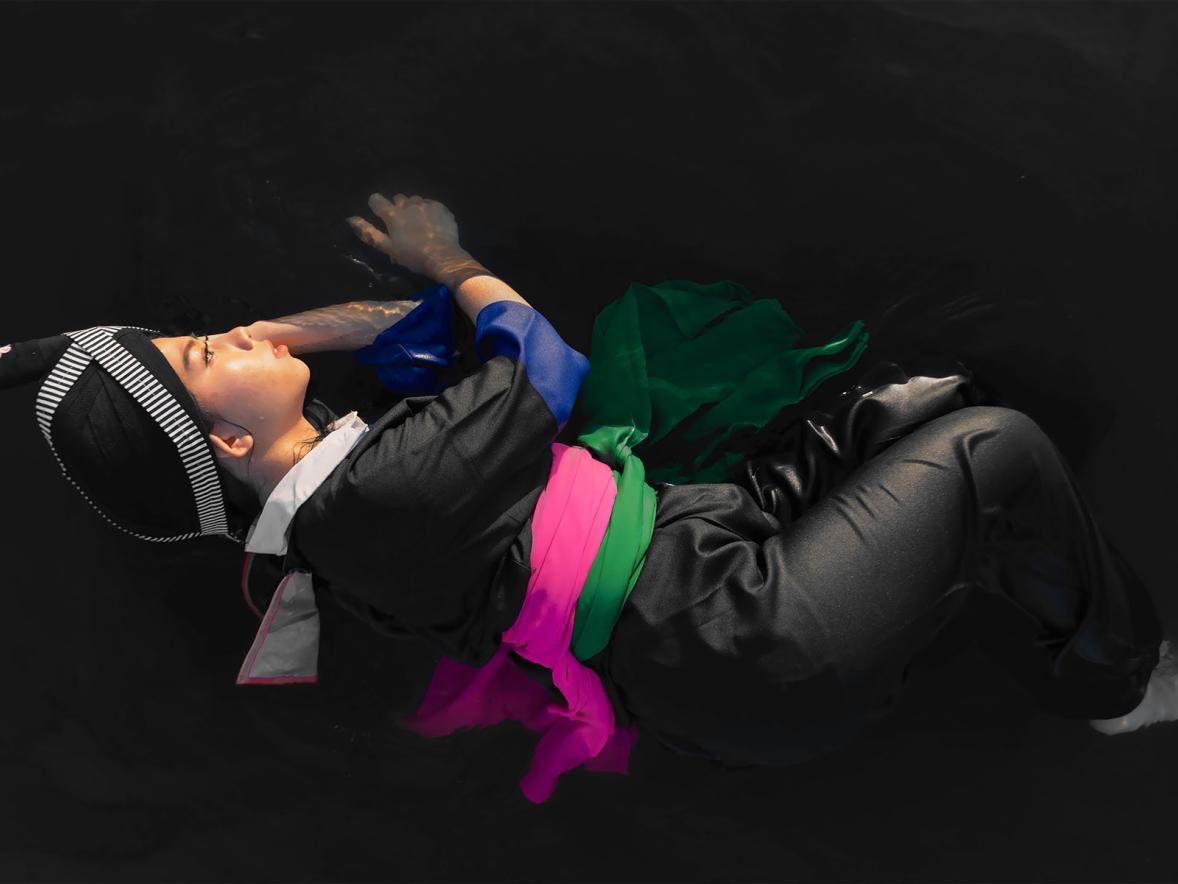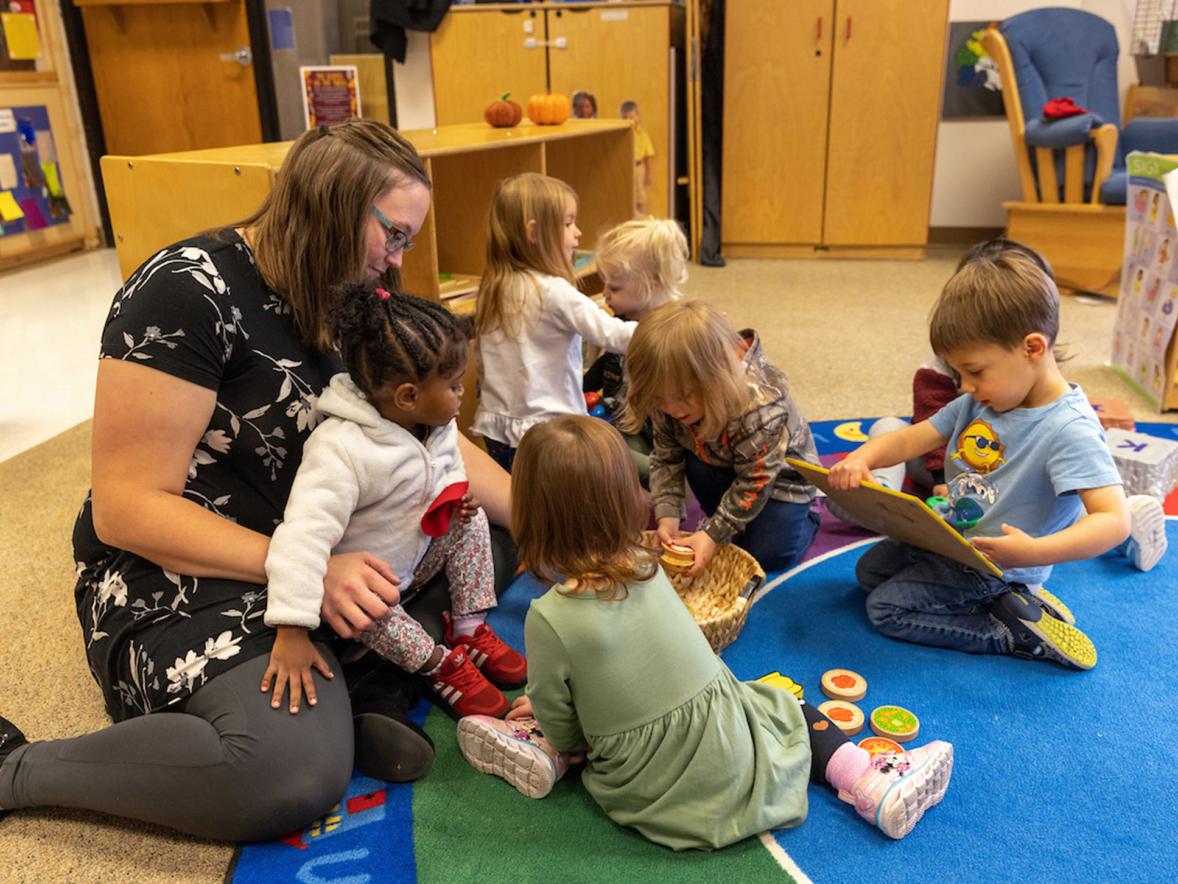Since the onset of COVID-19, most elementary and secondary schools are not allowing preservice teachers to physically enter the schools. This has altered the hands-on learning experiences for university students who are observing and student teaching.
But creativity and learning continue for UW-Stout art education students in Professor Ann Oberding’s practicum course K-12 Art Education Theory, Methods and Practice. In their final course before student teaching, students observe and develop curriculum for elementary and secondary art classrooms.
Knowing her 17 students would not have the opportunity to enter the schools, Oberding needed to create a hybrid learning experience in which her students could still complete their observation requirements in a virtual environment.
She contacted several regional teaching partners, or cooperating teachers, who were willing to participate virtually and who have shared lesson plans, art project samples, videos from their classrooms and documents related to teaching students with special needs.
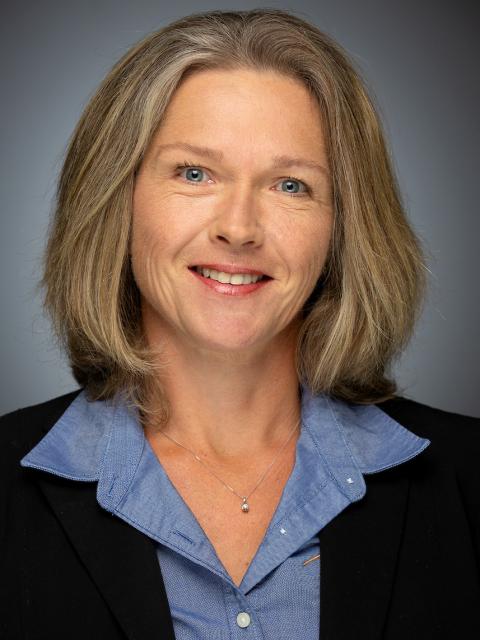
“This evidence of teaching and learning helps students immensely in regard to the narrative of what it looks like to teach and learn before and during COVID. It gives students a sense of what they will encounter when they do get into a live classroom,” Oberding said.
During a normal semester with in-person observations, 10 to 15 cooperating teachers are involved. Students would have one experience within a classroom with one cooperating teacher for 40 hours.
Oberding sees the changes this semester as a new opportunity to continue to partner with school districts and learn from teachers and students virtually. Virtual visits allow students to observe more than one classroom and they are not limited by travel time. They have virtually interviewed high school students from Osceola and observed two second-grade art classes from Hudson.
“Obviously, the drawback is that university students are not allowed to be in classrooms with students, learning how schools and classrooms run and feel. But we are making the best of it,” she said.
Becoming impactful teachers
Clare Marquardt and Sam Snyder, who will student teach next semester and graduate in May 2021, are in the hybrid practicum course.
Art has always been an outlet for them. They want to make a positive impact on their students, just as their teachers had on them.
Marquardt’s art teachers created classroom environments that, to her, felt like a second home – a place where she could be herself and succeed.
“I’ve always loved working with kids. I want to give that same classroom community to my students,” she said. “Teaching art is a dream job.”
“I never felt super interested in other subjects in school,” Snyder said. “I found my passion through creating and would always look forward to art class.”
Knowing that teaching art is their passion, Marquardt and Snyder were skeptical about the quality of the experience they’d receive in the hybrid course. But it has proven to be helpful in becoming impactful, knowledgeable and empathic teachers.
Clare Marquardt: Building classroom communities and connections
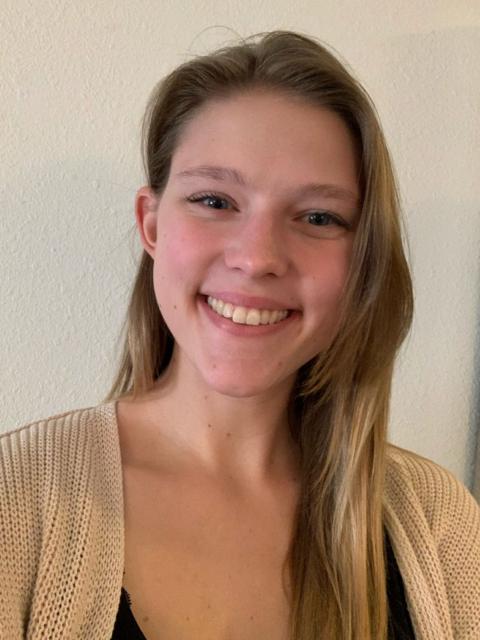
Marquardt, of Stratford, has worked with her peers to create, edit and teach her lessons.
“Getting their feedback has helped me see what they are doing differently and what I’m doing well,” she said. “Observing art classrooms virtually, it’s exciting to see how current teachers run their classroom, especially during the pandemic.”
During her interview with Osceola High School art students, Marquardt got a better glimpse into her future students’ perspectives and saw how she can be an impactful teacher.
“The most valuable thing I learned from them is that the best teachers show understanding for their students’ emotions, personality and artwork and really try to build that connection and community with their students,” she said. “By building this community you can take some of their personal experiences and tie them into the lesson plans.”
Marquardt learned the biggest challenge high school students face in the art room is being satisfied with their final artwork.
“Which is completely relatable,” she said. She learned they could benefit from a final project in which they could return to an old work with a fresh set of eyes and finish a piece of art to their satisfaction.
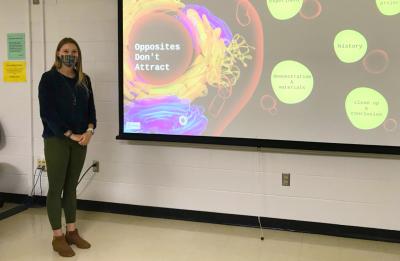
High school students are also dealing with the life changes brought on by the pandemic.
“The pandemic is changing and taking away their high school experiences, such as sports, artistic shows, dances and graduations,” Marquardt said.
“As teachers, we can provide other opportunities to display their success and talent in a safe way. And now more than ever, we can be understanding. Their lives are changing in ways they never expected. We can’t immediately expect the exact same from our students as we were before the pandemic.”
Marquardt wishes her practicum could be in person, but she does think the hybrid course is a good alternative this semester, one that she has benefited from.
“You never know when or if you will need to or want to go back to this form of teaching,” she said. “It has prepared me for using technology and different programs that I may not have ever learned. It has made me a more universal teacher who can reach all my students’ needs.”
Marquardt would like to teach art at the middle school level. “I think it’s the perfect balance between the fun-loving, energetic personality that many elementary students have and the more complex and mature projects that a high school art class would normally take on.”
Sam Snyder: Providing opportunities in changing times
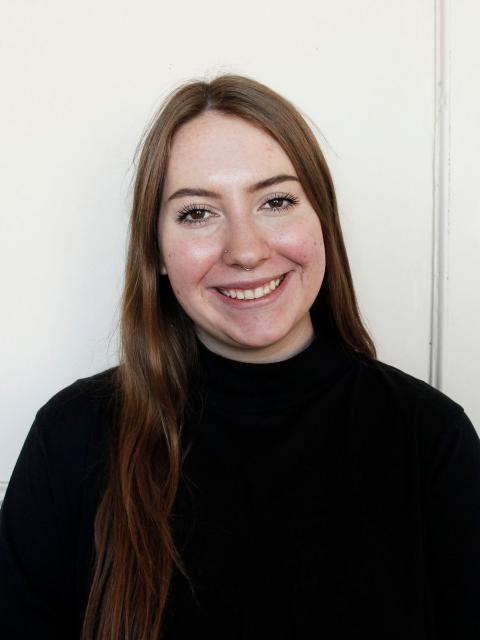
Snyder, of St. Paul, wants to teach at the middle school or high school level. “I really enjoy the possibilities with art at these levels and being able to deeply talk about art with students. I also love the creative freedom that comes with older students,” she said.
During her interviews with high school students, Snyder learned how COVID has impacted schools, teachers and students, calling the new normal “a harsh reality.”
“I really wanted more knowledge on what it’s like day to day for a teacher in these ever-changing times,” she said. “Because of the way that Ann has set up meetings with cooperating teachers and allowed us time to think about questions to ask, the conversations we have had will be extremely beneficial once I get my own classroom.”
With many high schools closing temporarily, she was interested to hear how students’ artwork went while at home. She found that when they were given a choice about their assignments, they tended to work faster at home.
“The most valuable part of the interviews for me was hearing what they would like to learn that they have not been given an opportunity to learn yet,” she said. “This made me want to put in a huge effort to ask my future students this question and give them an opportunity for choice lessons. I want my students to get all the experiences they want and to learn everything they want to learn.”
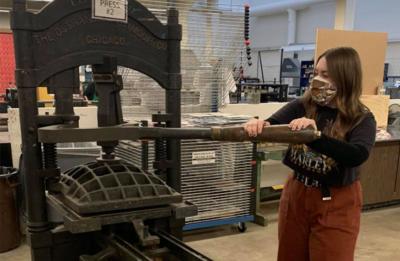
Snyder, who has a studio art minor, is a hands-on, in-person learner. She was unsure of how the hybrid course would go. But she’s adjusted well with the help of her teachers and classmates. And she feels the quality of her artwork has improved because she has more time to complete it.
“I’m allowed to fully dive into my art,” she said.
She also feels more prepared to teach online “even though that is something I thought I wouldn’t do,” she said. “To be a teacher you always have to be on your toes and ready to tackle any problem that comes your way.”
The most valuable thing Snyder learned from the cooperating teachers is how to start. “Learning how to come into a classroom and make yourself needed has always been something that I was scared could go wrong in my student teaching,” she said. “I’ve learned to value and appreciate every learning opportunity that is presented to me because there is always room to grow and learn.”





